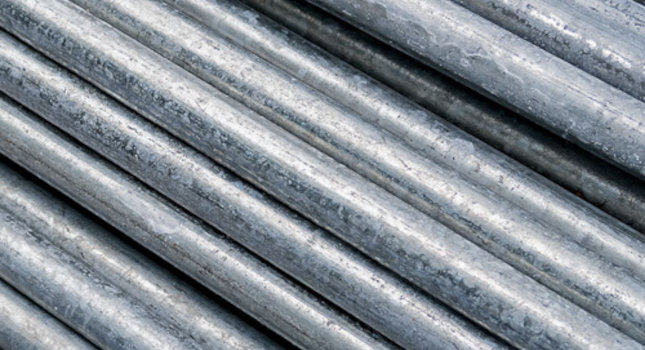Why you should consider using steel conduit and tubing
Steel conduit is a versatile and safe wiring method to choose when building commercial and industrial buildings.
Learning Objectives
- Discover how steel conduit is a versatile wiring method often used as electrical raceways for power, data and communication throughout commercial and industrial buildings.
- Learn how steel conduit and EMT are non-combustible, but the area around the conduit or EMT must be properly filled with the right materials to maintain the fire-resistance rating of the building.
- Understand how steel conduit or EMT as part of a fire-rated assembly can improve the fire resistance rating because the conduit and EMT have a zero score and zero combustibility.
Steel conduit insights
- Contractors have many options when selecting wiring methods, but steel conduit is non-combustible, has long life-spans and is extremely resilient.
- Electricians must consider the benefits of using steel conduit and tubing before choosing a lower end wiring method.
There are many options contractors have while selecting wiring methods; however, steel conduit and electrical metallic tubing, are versatile wiring methods often used as electrical raceways for power, data and communication throughout commercial and industrial buildings. These are the safest materials to use when choosing building wiring methods. Steel conduit and EMT are non-combustible, have long lifespans, are extremely resilient, in addition to being completely recyclable.
Steel conduit and EMT are viable options in fire safety design, yet they sometimes don’t make the list because they do not have a fire rating. When request for proposals or project bids require fire resistance scores, while conduit and EMT have none, contractors or specifying engineers may not include these valuable choices in their specifications.
To better understand why steel conduit and EMT are excellent choices when prioritizing fire safety, there are many factors to consider like fire resistance ratings, building codes and thermal protection.
Learn the facts about steel conduit
Before working with steel conduit and EMT, it’s important to consider building codes and fire ratings. Steel conduit and EMT are both considered non-combustible by building codes. Because of this, they do not have fire ratings. This can possibly confuse contractors and installers who do not have experience with steel conduit and EMT. If builders require a fire rating or if project bids evaluate or score based on this, they may miss out on the chance to evaluate steel conduit and EMT.
Because fire resistance ratings only apply to assemblies in their entirety, using steel conduit or EMT as part of a fire-rated assembly can improve the fire resistance rating because the conduit and EMT have a zero score and zero combustibility, supporting the fire resistance of the overall assembly. Even with a zero score, it remains important to be sure to review all local codes for penetrations, emergency circuits and fire pump circuits before installation.

Steel Conduit protects against fire and explosion and ideal in high-risk areas like gas stations, grain elevators and refineries. Courtesy: Steel Tube Institute
Penetration of fire-resistance rate assemblies
The National Electric Code and building codes require that openings around raceways which penetrate a fire-resistance rated assembly be sealed so that the possible spread of fire or products of combustion will not be substantially increased from one area to another. This can be accomplished by the use of a listed penetration firestop system or by use of annular space filler in accordance with building code exceptions. As steel conduit and EMT are noncombustible, it is not required that they have a fire-resistance rating but the area around the conduit or EMT must be properly filled with materials, such as cement, mortar or grout so that the fire-resistance rating of the building is maintained. Always refer to local codes prior to installation.
Thermal protection of steel raceways
Using steel conduit or EMT creates a fire-safe system with many other benefits. Using conduit or EMT in fire-rated enclosures provides a safe solution. Steel conduit and EMT can also be embedded in concrete, adding flexibility of design and safety, as concrete resists combustion. Buildings can also use a listed wrap system which further protects the integrity and safety of a steel raceway. Wrap systems can be easy to install and cost effective.
Using steel conduit or EMT in a listed circuit integrity system is another way to have an effective fire resistive installation. Circuit integrity systems are listed to UL 2196 and use circuit integrity cables within systems such as those with steel conduit or EMT to achieve fire ratings of one or two hours. The system must be installed as listed to achieve the fire rating meaning the size and type of cable, conduit and fittings must match what is included in the listing. Refer to the listing requirements of the system, the NEC and local codes to be sure of installation requirements on circuit integrity systems
Although routinely installed in fire-rated assemblies, steel conduit and EMT do not have a fire rating and are considered non-combustible by most building codes. Before using steel conduit or EMT, however, be sure to check all NEC and local codes to be sure the commercial or industrial assembly is admissible by local standards.
Fire safety is an essential part of any specifying process and engineers can amplify building effectiveness by recognizing all their choices and tools as they select and recommend their installations.
Do you have experience and expertise with the topics mentioned in this content? You should consider contributing to our CFE Media editorial team and getting the recognition you and your company deserve. Click here to start this process.



